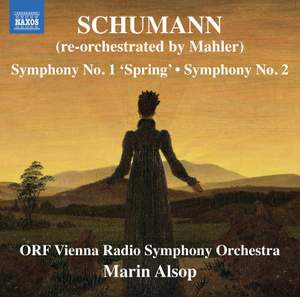Modern classical and avant garde concert music of the 20th and 21st centuries forms the primary focus of this blog. It is hoped that through the discussions a picture will emerge of modern music, its heritage, and what it means for us.
Search This Blog
Wednesday, November 30, 2022
Anil Camci's Dekagon, New Electronic Music Gems
Tuesday, November 29, 2022
A Baroque Christmas at Sono Luminus, Felipe Dominguez, Organ
What is a holiday except what you make it? I can recall more than one Christmas Season that virtually or nearly stood or fell on the basis of the music I heard that time of year. I am off to a good beginning this season with something I just got in the mail: A Baroque Christmas at Sono Luminus (Sono Luminus DSL-92260), with Felipe Dominguez at the organ. What distinguishes this one (other than the fine playing and sound) is the inviting combination of a few absolute Christmas classics with a treasure trove of lesser-known but vibrantly lively period works.
Wednesday, November 23, 2022
Moritz Moszkowski, Complete Music for Solo Piano, Volume Two
September 11, 2014 was when I last covered something of note by German-Jewish Polish descended composer Moritz Moszkowski (1854-1925) on these pages. Today I have the pleasure of writing about a new release, the Complete Music for Solo Piano, Volume Two (Toccata Classics TOCC 0660). Doing the honors on piano is Ian Hobson, and he seems fully in the elements of the music for flow and melodic thrust.
This volume concentrates on some three multi-movement works from 1877 and 1878, namely the "Sechs Stucke" of 1877, the "Drei Clavierstucke in Tantzform" of 1878, and the "Funf Clavierstucke" of 1878.
What sets this music up for us and in the end gives us a kind of endless banquet of musical treats is the continual motion of the music in dance form and further extensions beyond it, so that the perpetual motion suggests a connection to Chopin yet continually takes it further into a personally expressive mode with exceptional inventive brilliance.
As the liners tell us, Moszkowski in his day was almost entirely known for his "Spanish Dances" for piano duet, then his solo piano "Serenata" which opens this volume as the first part of the "Sechs Stucke," op 15. That is a nice way to begin, relatively simple and lyrical. The program then goes on from strength-to-strength, with interpretations that heighten the beauty of the various pieces, plus give us pause to appreciate the charm and winning warmth of it all.
There is no substitute for the direct appreciation of these works by repeated listens. It rewards you with a singing sort of contentment that affirms his continual freshness if we listen without an idea of what we will hear. I do recommend this one heartily. Get it and enjoy the ride!
Miriam K. Smith, Momentum, Cello and Piano by Prokofiev, Stravinsky. Nadia Boulanger, with Sandra Wright Shen, Mini-Review
Just another Monday as we live it? Well not entirely. We have a new CD by a cellist and a pianist with whom I do not have any previous eartime. It is cellist Miriam K. Smith and pianist Sandra Wright Shen and their very absorbing and expressive album Momentum (Azica ACD-71364). It gives us very much to like with two wonderful yet somewhat unappreciated gems by Prokofiev and Stravinsky: the Opus 119 Cello Sonata in G Major of Prokofiev's and the "Suite Italienne" by Stravinsky. Then we are treated to a even more rare work by the great Nadia Boulanger, her "Trois Pieces pour violincello et piano."
Wednesday, November 16, 2022
Dana Kaufman, Emily & Sue... An A Cappella Pop Opera Based on the Lives of Emily Dickinson and Susan Huntington Gilbert Dickinson
Tuesday, November 15, 2022
Robert Schumann, Symphonies 1 and 2 (Reorchestrated by Mahler), ORF Vienna Radio Symphony Orchestra, Marin Alsop
If you've been exposed at all to Robert Schumann's orchestral output and its brilliance, and too its reception history you have heard about and perhaps felt the sting of recognition with the idea that Schumann was a genius but in terms of orchestration he was perhaps a little too heavy-handed, with his excessive reliance upon the strings to carry much of the weight. Perhaps not as generally known is that Mahler reorchestrated all four symphonies toward the end of his career. Given the excellence of Mahler as orchestrator one comes to a recording of Symphonies Nos. 1 and 2 in the Mahler reworkings (Naxos 8.574429) with a sense of great expectations. It turns out that the expectations are well met in the performances of Martin Alsop and the ORF Vienna Radio Symphony Orchestra. So too the recording is first-rate as we might expect from Naxos. What then of the orchestrations themselves?
By definition we expect a good deal more of the winds and horns than Schumann originally called for. That certainly is the case. Mahler delivers. The full-blown tuttis come off strengthened but understandably it is not as drastic a re-sounding we hear there so much as in the more intimately lyrical and/or developmental passages. There in the latter the new attention to winds and brass has the new prominence you might expect from Mahler, yet too there is a more a Beethovenian presence there than before, which seems only fitting given the time frame of the compositions, the Romantic flourishing that started with Ludwig and then in time fell symphonically to Schumann.
Mahler's reorchestration of Beethoven's Ninth (which was recorded by Steinberg and the Pittsburgh Symphony Orchestra on a Command LP years ago) has relevance to our listening of the Schumann reorchestrations. Mahler on the Beethoven sounds like Mahler sounding like Beethoven, perhaps even more so than Beethoven sounds like Beethoven, in those uncanny woodwindy moments, in the nobility of the brass, etc. Mahler in the Schumann sounds like Mahler making Schumann sound somewhat Beethovenian, and nicely so. It is informative to hear Mahler's Beethoven's Ninth if you can find it online. It all kind of epitomizes how we think nowadays of the Romantic full orchestra, both that Beethoven and these Schumanns.
My own ears after a number of attentive listens especially has been perking up to the contrast of the Schumann version of No. 1 "Spring" versus the Mahler. I feel decidedly happy about the Mahler version of the 1st, in terms of the real gain in color, the beauty of sculpted wood and brass additions. Not that the Second Symphony under Mahler is any way lesser or not appropriate. Not at all. Yet I'll admit that since I learned the Second through a wonderful recording as conducted by the young firebrand, the young Bernstein in an early triumph for the Music Appreciation label in the '50s, since then it has remained a benchmark for my appreciation of the work, and in those terms I appreciate the Mahler reworking but cannot say it has replaced the Bernstein Schumann in my heart.
But of course as can be the case one needs to appreciate having both orchestrations in a manner that we gain from it all most surely. Bravo, then, for this recording.
If you love the Schumann symphonies this will make you happy. And if you do not love them maybe this will change your mind. Thoroughly recommended.
Wednesday, November 9, 2022
The Knights, The Kreutzer Project, Eric Jacobsen, Hearing Beethoven, Janacek, Jacobsen, Clyne
Tuesday, November 8, 2022
Mark Abel, Spectrum
Monday, November 7, 2022
Pictures of Light, The Music of William Baines, Duncan Honeybourne, Piano, with Gordon Pullin, Tenor
There are some composers that have been so obscured by their times and currents that their music can come as a kind of great surprise, a most pleasant shock. That to me is the case with William Baines (1899-1922), a composer I have never crossed paths with before, but gladly do so now with the recent album Pictures of Light (Divine Art dda 26234). It is nicely performed by pianist Duncan Honeybourne and a cameo appearance by tenor Gordon Pullin with the "Five Songs." We get a further interaction of the impact of the composer, a nice view with the concluding homage piano work by Robin Walker (b. 1953), an additional finely turned and exciting work "At the Grave of William Baines."
What we hear in the main (in the first 20 tracks) from Baines is some wonderfully wrought solo piano music that straddles the gap between Late Romantic expressive heights and Early-Modern torrents of somewhat edgy dramatics. So there is some relationship (you might note like I have) with Sorabji, Scriabin, Alkan, Debussy and Ravel, etc. Throughout the nicely performed totality is both an affiliation as I suggest but also a very original and bold brush of beautiful exceptionality, something saddened by the realization of how much more the composer would have been had he lived past the tragically brief, twenty-something-odd years of his actual lifetime.
I can say here without the slightest hesitation that this is a rather indispensable offering, exceptional piano music of its time by one we should now re-remember and rejoice to hear no matter how brief his lifespan, you who value the golden ages of pianism! This is a heretofore unknown but no less welcome addition to what we celebrate. Bravo.
Tuesday, November 1, 2022
Robert Kyr, All-Night Vigil, New Music in Eastern Orthodox Chant Style, Capella Romana, Alexander Lingas
It turns out there is another who works in the style, a composer named Robert Kyr. I am listening to a CD of his new chant influenced sounds for a capella chorus, in a CD appropriately named All Night Vigil (Capella Records Super Audio CD with Stereo and Multi Channel Options CP-426 SACD). Capella Romana take care quite beautifully of the performances under the direction of Alexander Lingas.
The style lives with some sonorous drones, extended sustains, deeply full choral outlays and deeply meditative sobriety and jubilation, plus the welcome thickening of the palette nicely with more modern harmonic densities at times, more than we would hear in the traditional form.
If you approach the music with no particular expectations, and if you are like me, you resonate with the primalities of possibility in archaic and post-archaic tonalities through the ages, well here are some beautiful new examples I suspect you will take to.
So this one is mostly self-selecting. If you think you will like it, then trust your intuitions, if not, not. Bravo for the vocal excellence, the great audio and the finely crafted honing of the Modern in the Archaic.









